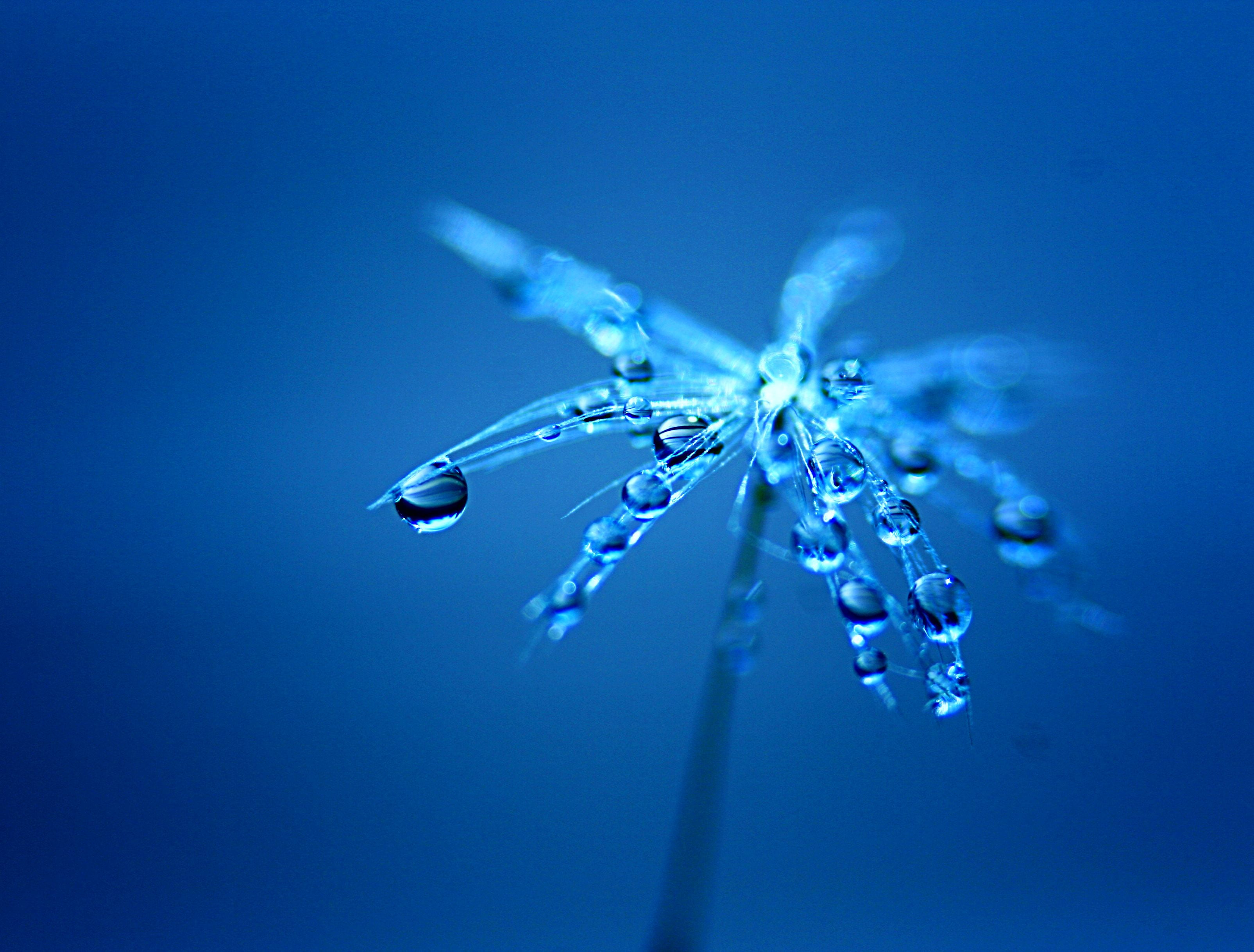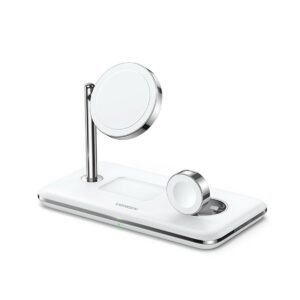Macro photography lets you see the world in a whole new light. From tiny insects to intricate flower petals, this style of photography reveals hidden details and beauty in everyday objects. It’s about capturing the extraordinary in the ordinary, and this guide will walk you through the essentials, from gear to techniques to post-processing.
This in-depth exploration of macro photography covers everything from understanding the fundamentals to mastering advanced techniques. We’ll examine the essential equipment, discuss composition strategies, and delve into post-processing steps. Whether you’re a beginner or a seasoned photographer, this guide provides valuable insights into the captivating world of macro photography.
Introduction to Macro Photography

Source: wallpaperflare.com
Macro photography is a specialized genre of photography focused on capturing extreme close-ups of small subjects. It involves techniques to achieve high magnification and detail, revealing intricate textures and structures often invisible to the naked eye. This unique perspective allows photographers to explore the hidden beauty of the natural world and man-made objects.Achieving magnification in macro photography relies on several key principles.
The most crucial is the lens’s ability to focus sharply at extremely close distances. Dedicated macro lenses are designed for this purpose, offering a higher degree of magnification and sharpness compared to standard lenses. Furthermore, the photographer must precisely control the depth of field, which is the range of focus in the image. Shallow depth of field, common in macro, can isolate the subject against a blurred background, enhancing the subject’s prominence.
Macro Photography Subjects
Macro photography offers a unique opportunity to explore a vast array of subjects. Insects, flowers, and other botanical specimens are popular choices, revealing the intricate details of their structures. Also, miniature objects, such as coins, stamps, and jewelry, can be beautifully showcased. The focus on detail in macro photography extends to the textures of everyday objects, such as the surface of a leaf or the grains of wood.
Macro Photography Styles
Macro photography encompasses diverse styles, each emphasizing a different aspect of the subject. One style focuses on extreme close-ups, capturing the subject in immense detail. For example, a close-up of a butterfly’s wing might reveal the intricate patterns and colors. Another style centers on capturing intricate details. This might involve photographing the delicate veins in a leaf or the tiny carvings on a miniature figurine.
A final style highlights the textures of subjects. The velvety texture of a spider’s web, or the rough surface of a stone, could be emphasized in this style.
Comparison with Other Photography Genres
| Feature | Macro Photography | Landscape Photography | Portrait Photography | Street Photography |
|---|---|---|---|---|
| Subject Focus | Extreme close-ups of small objects, details | Wide-angle views of natural landscapes | Portraits of people | Everyday life in public spaces |
| Depth of Field | Typically shallow, isolating the subject | Generally deep, capturing the entire scene | Can be shallow or deep, depending on the desired effect | Often shallow, drawing attention to specific elements |
| Lens Type | Dedicated macro lenses or lenses with macro capabilities | Wide-angle lenses, zoom lenses | Prime lenses, zoom lenses | Prime lenses, zoom lenses |
| Composition | Emphasis on details, textures, and intricate patterns | Emphasis on scenery, light, and perspective | Emphasis on facial expressions, body language | Emphasis on candid moments, interactions, and environment |
Equipment for Macro Photography
Macro photography demands specialized equipment to capture intricate details. Getting the right gear is crucial for achieving sharp, captivating images of tiny subjects. This section will cover essential equipment, highlighting the strengths and weaknesses of different options, along with crucial lighting considerations.Macro photography pushes the boundaries of close-up shooting, requiring careful consideration of lens performance, camera stability, and lighting techniques.
Macro photography is all about capturing the tiniest details, and that’s where materials like Saint-Gobain Glass Saint-Gobain Glass become really interesting. Their intricate surface textures and light reflections make for some seriously cool macro shots. The sheer variety of ways glass can be manipulated, like in lenses, further emphasizes the possibilities within the realm of macro photography.
Understanding the trade-offs between various options will empower you to choose the best tools for your specific needs and photographic style.
Macro Lenses
Macro lenses are specifically designed for extreme close-up photography, enabling magnification ratios that reveal minute details. They offer a fixed focal length, often optimized for sharp focus and high resolution at close distances. Different macro lenses offer varying magnification capabilities and build quality, impacting image quality and price.
- Advantages of Macro Lenses: These lenses are meticulously engineered to deliver sharp, high-resolution images at close focusing distances. They often feature exceptional build quality, ensuring durability and reliability in demanding photographic situations. The fixed focal length allows for precise control over the depth of field, making them ideal for isolating subjects against a blurred background.
- Disadvantages of Macro Lenses: Macro lenses can be more expensive than standard lenses. Their limited focal length might not be suitable for all shooting situations, requiring additional equipment for wider shots. The fixed focal length may not be adaptable for various compositions, potentially requiring repositioning of the photographer.
Camera Types
Different camera types have varying strengths and weaknesses when it comes to macro photography. The sensor size, autofocus system, and build quality of a camera can influence image quality and workflow.
| Camera Type | Pros | Cons |
|---|---|---|
| DSLR | Generally more affordable, offering a wide range of lenses and accessories. Often have robust build quality and excellent autofocus systems. | Can be bulkier and heavier than mirrorless cameras. May have a slower autofocus in some models compared to mirrorless. |
| Mirrorless | Smaller and lighter than DSLRs, often with faster and more responsive autofocus systems. Offer more advanced image stabilization features. | Can sometimes have a narrower range of compatible lenses compared to DSLRs. May have slightly higher initial cost than some DSLRs. |
| Compact System Cameras (CSCs) | Portable and lightweight, offering a balance between size and features. Good for macro photography in situations requiring portability. | Limited image quality compared to DSLRs or mirrorless cameras in high-magnification scenarios. May have a smaller sensor, impacting low-light performance. |
Lighting in Macro Photography
Proper lighting is crucial for macro photography. Natural light can be used, but artificial light sources offer greater control and flexibility.
- Natural Light: Soft natural light can produce beautiful, diffused illumination, ideal for showcasing textures and details. However, its availability is limited and can be inconsistent, requiring adjustments in the shooting time.
- Artificial Light: Artificial light sources, such as speedlights or strobes, offer greater control over intensity, color temperature, and direction. This allows for precise adjustments for the desired image quality. Careful consideration must be given to avoid harsh shadows or unwanted reflections.
Accessories
Macro photography often benefits from accessories that enhance image quality, stability, and convenience.
- Tripods: Essential for achieving sharp images by minimizing camera shake, particularly when using long exposure times or high magnification. Tripods provide stability, allowing for sharper macro shots. Different sizes and materials offer varying stability and portability.
- Extension Tubes: Increase the magnification capabilities of a lens without the need for a macro lens. They can be affordable and allow for greater magnification, but may affect the autofocus system and depth of field. This is an alternative for achieving macro results without the cost of a macro lens.
- Bellows: Enable further magnification and greater control over depth of field compared to extension tubes. They are useful for close-up shots, offering more flexible positioning for the subject and camera. The use of bellows adds complexity to the setup, but allows for extensive control.
Techniques and Methods
Mastering macro photography goes beyond just having the right equipment. It’s about understanding the techniques and methods that allow you to capture the intricate details and beauty of your subjects. This section delves into the crucial aspects of achieving sharp focus, controlling depth of field, composing compelling images, and harnessing the power of light and shadow.Achieving exceptional sharpness in macro photography is paramount.
A precise focus is essential to reveal the intricate details of your subjects. The techniques used are multifaceted and crucial to obtaining high-quality images.
Sharp Focus Techniques
Precise focus is critical for revealing minute details in macro subjects. Several techniques enhance focus accuracy. Using a tripod is a fundamental step. It eliminates camera shake, which is particularly problematic at close focusing distances. Focusing aids, like magnification tools, also prove helpful in fine-tuning focus.
Macro photography is all about getting up close and personal with tiny subjects. It often requires specialized lenses and lighting, and the precision needed for this type of photography is quite impressive, especially when you consider the quality of glass used in equipment like high-end macro lenses. Companies like AGC Glass are known for their advanced glass technology, which directly impacts the quality of optical components used in macro photography.
This, in turn, makes these images even more detailed and stunning.
Using live view with magnification is another helpful tool, offering a magnified view to precisely pinpoint focus.
Controlling Depth of Field
Depth of field, the area in focus, is a key consideration in macro photography. A shallow depth of field isolates the subject against a blurred background, drawing attention to the fine details. Several factors influence depth of field: aperture, focal length, and distance to the subject. A smaller aperture (higher f-stop number) increases depth of field, whereas a larger aperture (lower f-stop number) results in a shallow depth of field.
A longer focal length with a fixed focus lens results in a shallower depth of field. The distance to the subject also affects the depth of field, with subjects closer to the lens exhibiting a shallower depth of field.
Macro Image Composition
Composition in macro photography is crucial for creating visually appealing images. Effective composition draws the viewer’s eye to the subject and highlights its details. Employing the rule of thirds, leading lines, and symmetry can enhance the visual impact. Framing the subject within the scene adds depth and context. Consider the negative space around the subject, ensuring it doesn’t overwhelm the image.
Light and Shadow in Macro
Light and shadow play a critical role in shaping the mood and texture of macro subjects. Understanding how light interacts with the subject is vital for creating captivating images. Natural light sources, such as sunlight, can produce stunning effects. The time of day significantly affects the quality of light. Experimenting with different lighting angles, directions, and intensities can yield diverse results.
Artificial lighting allows greater control over the light’s quality and intensity. A flash can freeze motion and illuminate hidden details.
Lighting Setups
Diverse lighting setups significantly impact macro photography. Understanding the effect of each setup is crucial. Front lighting illuminates the subject directly, casting little shadow. Side lighting creates highlights and shadows, adding depth and dimension to the subject. Backlighting can produce silhouettes or highlight the subject’s contours.
Using a combination of these setups can create complex and dramatic effects. A diffused light source, like a softbox or umbrella, reduces harsh shadows, enhancing detail and contrast. A reflector can bounce light back onto the subject, filling in shadows and creating a balanced illumination. Experimentation with different lighting setups is key to finding the ideal lighting conditions for each subject.
Macro photography lets you capture incredible detail, but you also need a device that can keep up. Think about how long your phone’s battery lasts during a long shoot. With impressive audio playback times like Audio playback: hingga 80 jam (16) / 100 jam (16 Plus) , you can focus on the tiny wonders without worrying about running out of juice or needing to constantly recharge.
It’s a great combo for a dedicated macro photographer.
Composition and Subject Selection: Macro Photography
Macro photography isn’t just about getting close; it’s about telling a story through detail. Effective macro images often depend on a keen eye for composition and the ability to select subjects that evoke a strong visual response. Choosing the right subject and arranging it within the frame is crucial for capturing compelling macro images.A well-composed macro shot can transform an ordinary detail into a captivating masterpiece, while a poorly composed one can leave the viewer unmoved.
Understanding how to frame your subject, use leading lines, and create a sense of depth is essential to achieving a strong macro image.
Macro photography is all about getting up close and personal with tiny details. Thinking about the colors you might use in your macro shots, like the vibrant options available in Color options: ultramarine, teal, pink, white, black , can really elevate your images. The right color palette can dramatically impact the overall aesthetic of your macro work.
Importance of Composition in Macro Photography
Composition in macro photography is paramount. It’s about more than just getting the subject in the frame; it’s about arranging the elements within the frame to create a compelling visual narrative. Effective composition guides the viewer’s eye through the image, highlighting key details and creating a sense of depth and visual interest. Strong compositional elements, like leading lines, symmetry, and patterns, can draw the viewer’s attention to specific areas of the image.
Examples of Strong Macro Compositions
A striking macro image of a water droplet on a spiderweb, with the spiderweb acting as a leading line towards the droplet, creates a strong visual narrative. The delicate textures and the play of light and shadow highlight the subject’s beauty. Another example might be a close-up of a flower’s intricate stamen, carefully composed to showcase the color and texture contrasts.
The depth of field can isolate the subject, drawing the viewer’s attention to the fine details. A well-composed macro shot of an insect’s eye, highlighting the intricate patterns and colors, can be visually arresting.
Choosing Appropriate Subjects
Selecting the right subject is key to successful macro photography. Understanding the subject’s characteristics, including its form, color, texture, and behavior, is crucial. A subject that possesses a unique texture, like the scales of a beetle, can create a visually interesting image. Consider the light conditions and how they interact with the subject’s features. Subjects that possess intriguing patterns or symmetry are ideal candidates for macro photography.
Understanding Subject Characteristics
Understanding the subject’s characteristics is fundamental. This involves recognizing the subject’s unique features and how they can be presented in the image. For example, the intricate patterns on a butterfly’s wings can be highlighted to showcase the artistry of nature. Consider how the subject’s behavior can be captured, such as a bee collecting pollen, or a spider spinning a web.
An insect’s posture or expression can add depth to the image. The lighting conditions and time of day can dramatically affect how the subject appears.
Subject Categories for Macro Photography
- Insects: Insects offer a vast array of textures, colors, and behaviors. Their intricate details, such as compound eyes, antennae, and legs, provide ample opportunities for compelling close-ups. Consider capturing insects in their natural habitats for a more authentic representation.
- Flowers: Flowers, with their vibrant colors and delicate structures, are a classic subject for macro photography. The intricate details of petals, stamens, and pistils are often highlighted in macro images. The variety of flower shapes and colors offers numerous creative possibilities.
- Details of Objects: Everyday objects, like a single grain of sand, a drop of water, or the texture of a piece of wood, can reveal hidden beauty when viewed up close. The textures and patterns in these subjects can create striking visuals.
Post-Processing and Editing
Post-processing is a crucial step in macro photography, allowing you to refine your images and bring out the details and beauty of your subjects. It’s not about simply fixing flaws, but enhancing the overall aesthetic and storytelling of the image. From adjusting sharpness to correcting color casts, post-processing can transform a good macro photo into a truly exceptional one.
Common Post-Processing Techniques
Post-processing techniques offer a range of tools to improve macro images. These techniques include sharpening, contrast adjustment, color correction, and blemish removal, all contributing to a more compelling final product. Careful application of these techniques is key to maintaining the natural beauty of the subject while enhancing its visual impact.
Enhancing Sharpness and Contrast
Sharpness and contrast are critical elements in macro photography, as minute details and textures are often the focal points. Techniques for improving these aspects can significantly elevate the image’s visual appeal. Appropriate adjustments can reveal hidden details, making the subject stand out from the background.
- Sharpening: Utilizing sharpening tools can increase the perceived detail in an image. Carefully applied sharpening avoids excessive “noise” or a harsh, artificial look. Appropriate sharpening levels depend on the specific image and the desired effect.
- Contrast Adjustment: Increasing contrast can highlight textures and details, drawing the viewer’s attention to specific areas of the image. A good balance is key; excessive contrast can lead to an image that appears harsh or unnatural.
Color Correction and Adjustments, Macro photography
Accurate color representation is essential for macro photography, as subtle color variations in nature can be amplified in close-up views. Color correction ensures the colors in the image accurately reflect the subject’s appearance.
- White Balance: White balance adjustments ensure that colors appear correctly, eliminating unwanted color casts or tints. This step is crucial for achieving accurate representation of the scene.
- Color Grading: Color grading techniques can be used to fine-tune the overall color palette, adding a desired mood or style to the image. These techniques range from subtle adjustments to dramatic transformations.
Removing Imperfections or Distractions
Macro photography often reveals imperfections in the subject, such as dust or scratches, that might not be noticeable at normal magnification. Removing these imperfections allows the viewer to focus on the subject’s beauty without distraction.
Macro photography is all about getting up close and personal with tiny subjects. It often requires specialized lenses and lighting, and the precision needed for this type of photography is quite impressive, especially when you consider the quality of glass used in equipment like high-end macro lenses. Companies like AGC Glass are known for their advanced glass technology, which directly impacts the quality of optical components used in macro photography.
This, in turn, makes these images even more detailed and stunning.
- Spot Removal: Tools for removing small blemishes or distracting elements like dust particles or scratches are essential for improving image quality. Careful application is needed to avoid unnatural-looking results.
- Background Blurring (Bokeh): Adjusting focus and aperture can create a soft, out-of-focus background, allowing the subject to stand out and drawing attention to it.
Editing Software Comparison
Different editing software provides various tools and features for enhancing macro images. Selecting the right software depends on the user’s specific needs and preferences.
| Software | Pros | Cons |
|---|---|---|
| Adobe Photoshop | Industry-standard software with comprehensive tools for all aspects of image editing, including advanced macro-specific techniques. | Steep learning curve; requires significant time investment to master the tools. |
| GIMP | Free and open-source software with a wide range of editing tools. Suitable for beginners and those seeking a less expensive alternative. | Feature set might not be as extensive as Photoshop; learning curve can be present. |
| Luminar | User-friendly interface; intuitive tools for color grading and other adjustments. Ideal for those looking for ease of use. | May not offer the same level of control as more advanced software. |
| Capture One | Highly regarded for RAW processing; provides precise control over image details, including macro-specific edits. | Can be more expensive than other options. |
Illustrative Examples and Case Studies
Macro photography allows us to see the world in a completely new light, revealing intricate details and textures often overlooked. By studying successful macro images, we can learn valuable techniques and artistic choices that contribute to their visual impact. These examples serve as a practical guide for aspiring macro photographers, illustrating how to translate technical proficiency into captivating visuals.Exceptional macro photography combines technical skill with artistic vision.
Understanding the technical aspects of aperture, depth of field, and lighting is crucial. However, the real magic lies in selecting compelling subjects, using creative perspectives, and employing post-processing to enhance the final image. By examining successful examples, we can dissect these elements and gain a deeper appreciation for the art form.
Outstanding Macro Photographs
Several macro images capture the essence of the subject in exquisite detail. Consider a photograph of a single raindrop clinging to a blade of grass. The intricate details of the water droplet, the subtle variations in light reflecting off its surface, and the delicate texture of the grass blade combine to create a mesmerizing image. Another compelling example might be a close-up of a flower’s pistil, showcasing the vibrant colors and intricate structures of the pollen grains.
These minute details, captured with precision, reveal a hidden beauty in nature.
Technical Aspects and Artistic Choices
The technical aspects of macro photography are vital to capturing these details. A macro lens with a high magnification ratio is essential to achieve the required close-up view. Careful control of depth of field allows the photographer to isolate the subject from the background, ensuring the subject stands out. The use of appropriate lighting, whether natural or artificial, is equally crucial.
Soft, diffused light can highlight the textures and colors of the subject, while hard light can create dramatic shadows and highlights.
Perspectives and Angles
Utilizing diverse perspectives and angles is key to creating captivating macro images. A low-angle shot of a spider web, for instance, might highlight the intricate patterns and delicate threads. A high-angle view, on the other hand, could reveal the interplay of light and shadow across the subject. The photographer’s choice of perspective directly impacts the viewer’s perception of the subject.
Elements Contributing to Visual Appeal
Several elements contribute to the visual appeal of a macro photograph. Sharp focus, excellent color rendition, and meticulous attention to detail are crucial. The composition, framing, and arrangement of elements within the image also significantly influence the overall impact. Consider how the background is treated—a blurred background can draw the viewer’s attention to the subject. Effective use of light and shadow creates depth and dimension within the image.
Photographic Characteristics Table
| Image | Subject | Technical Aspects | Artistic Choices | Visual Appeal |
|---|---|---|---|---|
| Raindrop on Grass | Raindrop, Grass Blade | High magnification lens, shallow depth of field, soft light | Low angle, emphasis on water droplet detail | Intricate details, subtle light reflections, delicate textures |
| Flower Pistil | Flower Pistil | Macro lens, controlled lighting, shallow depth of field | Close-up view, vibrant color rendition | Intricate structure, rich color palette, high detail |
Challenges and Considerations
Macro photography, while rewarding, presents unique hurdles. It’s a demanding genre requiring a keen eye, precise technique, and a deep understanding of your subject and its environment. From achieving pinpoint focus to managing limited depth of field, mastering these aspects is crucial for capturing stunning macro images.The intimate nature of macro photography often magnifies the challenges. Small subjects require meticulous attention to detail, and the slightest movement can ruin a shot.
Patience and perseverance are key virtues in this field, as well as a good understanding of how light interacts with the subject in the specific environment.
Achieving Sharp Focus
Sharp focus is paramount in macro photography. The extreme magnification required necessitates precise control over focus. Using a tripod is almost always essential, as even the slightest camera movement can lead to blurry images. Furthermore, the use of a macro lens and focusing aids, like magnification tools, are crucial for fine-tuning the focus. Focusing stacking techniques can also be employed to combine multiple images with slightly different focus points, creating a single image with incredible sharpness throughout the entire depth of field.
Controlling Depth of Field
Macro photography often demands a shallow depth of field. The small working distance and high magnification create a narrow zone of sharpness. This requires careful selection of aperture settings and understanding of the relationship between aperture, focal length, and distance. The narrower the aperture, the greater the depth of field. However, narrower apertures can also lead to slower shutter speeds, making a tripod even more critical.
Using a larger aperture can yield a shallow depth of field, perfect for isolating the subject against a blurred background, but can lead to a small area of sharpness.
Patience and Perseverance
Macro photography demands patience and persistence. Subjects are often small, delicate, and prone to movement. Finding the right moment to capture the perfect shot can take time. Patience allows photographers to observe their subjects and anticipate their actions, leading to better compositions and more successful shots. Perseverance helps overcome setbacks and maintain a positive attitude, crucial for pushing creative boundaries in this demanding genre.
Overcoming Obstacles
Numerous obstacles can hinder macro photography. Environmental factors, like wind, light changes, and moisture, can impact the quality of the image. Furthermore, subjects’ behaviors and the challenges of maintaining a stable setup can cause issues. Practicing techniques like using a remote shutter release, employing a sturdy tripod, and employing focus stacking, can significantly help overcome these hurdles.
Thorough preparation and anticipating potential problems beforehand can save precious time and effort.
Understanding Subject Behavior and Environment
Understanding the subject’s behavior and the environment is crucial. Knowing when the subject is most active, and how it reacts to stimuli, will lead to more successful images. Understanding the lighting conditions, and how light interacts with the subject, is also vital. Observing the environment helps anticipate potential disturbances and ensure a calm, stable setup, leading to better control over the photographic process.
Knowing the subject and its environment can help anticipate movements and actions, allowing for more precise timing and composition.
End of Discussion
We’ve journeyed through the fascinating world of macro photography, exploring its intricacies from the equipment needed to the artistic choices involved. Hopefully, this comprehensive guide has equipped you with the knowledge and inspiration to embark on your own macro photography adventures. Remember, patience, practice, and a keen eye for detail are key to capturing stunning macro images. So get out there, experiment, and unleash your inner macro photographer!
FAQ Overview
What’s the difference between macro and close-up photography?
Macro photography specifically aims for a 1:1 or greater magnification ratio, capturing the subject in its full detail, whereas close-up photography might not achieve this level of magnification. Think of macro as the extreme close-up.
What kind of subjects are best for macro photography?
Almost anything! Insects, flowers, leaves, small objects, and even details of everyday items like buttons or zippers can be fantastic macro subjects. The key is to find the beauty in the details.
What are some common challenges in macro photography?
Achieving sharp focus and controlling depth of field can be tricky. Also, lighting conditions can be difficult to manage. Patience and experimentation are essential to overcome these hurdles.
What editing software is best for macro images?
Many software options work well. Popular choices include Adobe Photoshop, Lightroom, and GIMP. The best choice depends on your budget and skill level.




